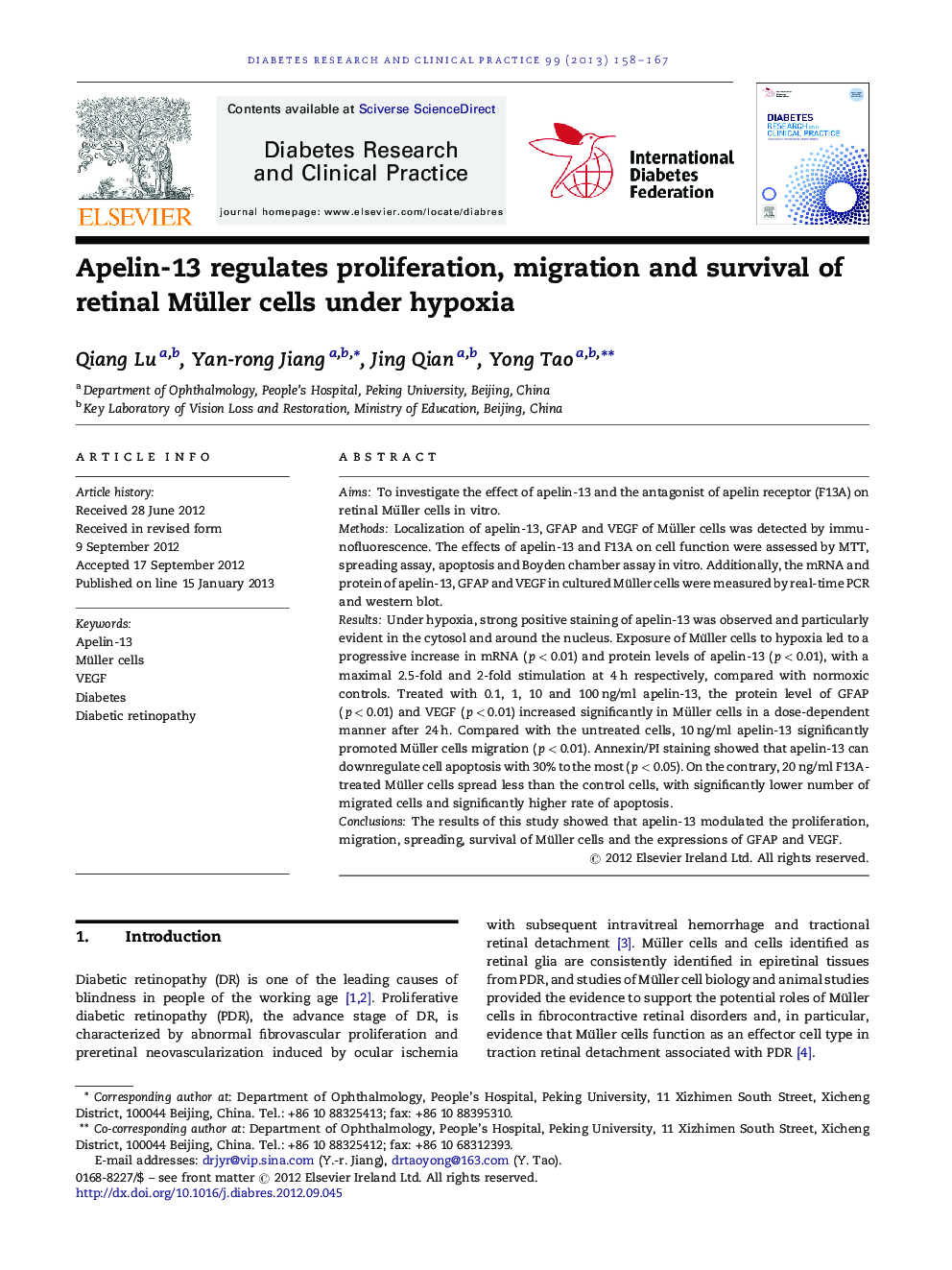| Article ID | Journal | Published Year | Pages | File Type |
|---|---|---|---|---|
| 5900014 | Diabetes Research and Clinical Practice | 2013 | 10 Pages |
AimsTo investigate the effect of apelin-13 and the antagonist of apelin receptor (F13A) on retinal Müller cells in vitro.MethodsLocalization of apelin-13, GFAP and VEGF of Müller cells was detected by immunofluorescence. The effects of apelin-13 and F13A on cell function were assessed by MTT, spreading assay, apoptosis and Boyden chamber assay in vitro. Additionally, the mRNA and protein of apelin-13, GFAP and VEGF in cultured Müller cells were measured by real-time PCR and western blot.ResultsUnder hypoxia, strong positive staining of apelin-13 was observed and particularly evident in the cytosol and around the nucleus. Exposure of Müller cells to hypoxia led to a progressive increase in mRNA (p < 0.01) and protein levels of apelin-13 (p < 0.01), with a maximal 2.5-fold and 2-fold stimulation at 4 h respectively, compared with normoxic controls. Treated with 0.1, 1, 10 and 100 ng/ml apelin-13, the protein level of GFAP (p < 0.01) and VEGF (p < 0.01) increased significantly in Müller cells in a dose-dependent manner after 24 h. Compared with the untreated cells, 10 ng/ml apelin-13 significantly promoted Müller cells migration (p < 0.01). Annexin/PI staining showed that apelin-13 can downregulate cell apoptosis with 30% to the most (p < 0.05). On the contrary, 20 ng/ml F13A-treated Müller cells spread less than the control cells, with significantly lower number of migrated cells and significantly higher rate of apoptosis.ConclusionsThe results of this study showed that apelin-13 modulated the proliferation, migration, spreading, survival of Müller cells and the expressions of GFAP and VEGF.
